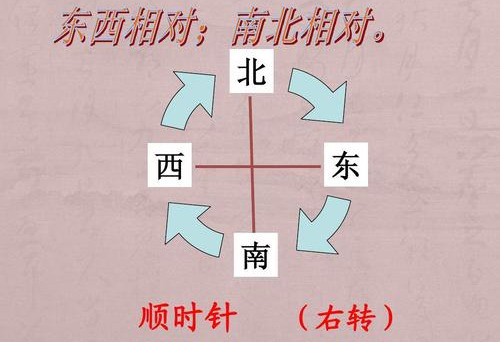- 签证留学 |
- 笔译 |
- 口译
- 求职 |
- 日/韩语 |
- 德语

方位即方向,东、西、南、北为基本方位。汉英两种语言中都有相对应的词表达这四个基本方位:东(east),西(west),南(south)和北(north)。然而,由于汉英民族所处的地理位置不同,对方位的认识及词语表达存在一定的差异。
在中国文化中,自古就有“南面为王,北面为朝”、“南为尊,北为卑”的传统。皇帝的龙椅面向南摆放;“天下衙门朝南开”。老百姓盖房也是座北向南。因此,汉语中表达方位“南”为先。人常说“南来北往,从南到北”。而英语文化则相反,英美人表达方位“北”为先。下面是汉英两种语言文化中有关南、北方位的不同表达。
从南到北 from north to south
北屋 a room with a southern exposure
南北朝 the Northern and Southern Dynasties (420一589)
南征北战 fight north and south on many fronts
南北对话 North-south dialogue (i. e. dialogue between developed countries in the Northern Hemisphere and developing countries in the southern Hemisphere)
同样, 四个表示中间方位的词语在汉英两种语言中表达也完全相反。
西北 northwest, 如 Northwest University (西北大学)
西南 southwest, 如 southwest (或 southwesterly) wind (西南风)
东北 northeast, 如 The Anti-Japanese Amalgamated Army of the Northeast (organized and led by the Communist Party of China after the September 18th Incident of 1931) (东北抗日联军)
东南 southeast,如 the Association of Southeast Asian Nations(ASEAN东南亚联盟)
现在我们来看东、西两个方位。
汉英两种语言中东、西方位的表达是一致的。例如:从东到西可直译为from east to west。但一些东、西方位构成的词语有一定的文化含义。例如:“东床”若直译成east bed就会使人笑掉大牙。“东床”源自典故。晋代太尉郗鉴派一位门客到王导家选女婿。门客回来说:“王家的年轻人都好,但是听到有人去选女婿,都拘谨起来,只有一位在东边床上敞开衣襟吃饭的,好像没有听到似的。”郗鉴说:“这正是一位好女婿。”这个人就是王羲之。于是把女儿嫁给他„ (见于《晋15•王羲之传>)后来人们 便称女婿为“东床”,其正确英译为son-in-law。
类似的词语还有:
东窗事发the plot has come to light; the secret is out
东奔西走run around here and there; bustle about
东山再起stage a comeback